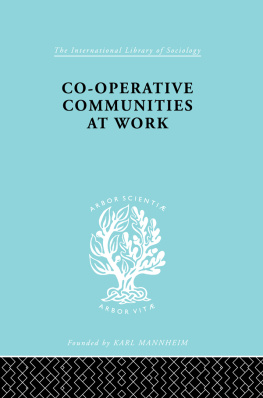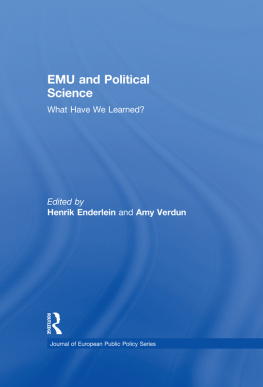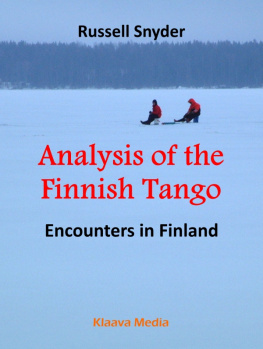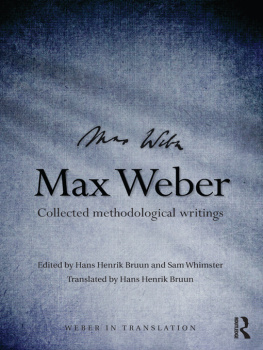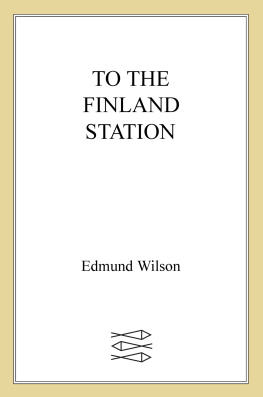Henrik Meinander - History of Finland
Here you can read online Henrik Meinander - History of Finland full text of the book (entire story) in english for free. Download pdf and epub, get meaning, cover and reviews about this ebook. year: 2020, publisher: Oxford University Press, genre: Religion. Description of the work, (preface) as well as reviews are available. Best literature library LitArk.com created for fans of good reading and offers a wide selection of genres:
Romance novel
Science fiction
Adventure
Detective
Science
History
Home and family
Prose
Art
Politics
Computer
Non-fiction
Religion
Business
Children
Humor
Choose a favorite category and find really read worthwhile books. Enjoy immersion in the world of imagination, feel the emotions of the characters or learn something new for yourself, make an fascinating discovery.
- Book:History of Finland
- Author:
- Publisher:Oxford University Press
- Genre:
- Year:2020
- Rating:5 / 5
- Favourites:Add to favourites
- Your mark:
- 100
- 1
- 2
- 3
- 4
- 5
History of Finland: summary, description and annotation
We offer to read an annotation, description, summary or preface (depends on what the author of the book "History of Finland" wrote himself). If you haven't found the necessary information about the book — write in the comments, we will try to find it.
History of Finland — read online for free the complete book (whole text) full work
Below is the text of the book, divided by pages. System saving the place of the last page read, allows you to conveniently read the book "History of Finland" online for free, without having to search again every time where you left off. Put a bookmark, and you can go to the page where you finished reading at any time.
Font size:
Interval:
Bookmark:

A HISTORY OF FINLAND


Oxford University Press is a department of the University of Oxford. It furthers the Universitys objective of excellence in research, scholarship, and education by publishing worldwide. Oxford is a registered trade mark of Oxford University Press in the UK and certain other countries.
Published in the United States of America by
Oxford University Press
198 Madison Avenue, New York, NY 10016,
United States of America.
Henrik Meinander, 2011
Revised and updated paperback edition published 2020.
Translation Tom Geddes, 2011
First published as Finlands historia by Sderstrms, Helsinki
All rights reserved. No part of this publication may be reproduced, stored in a retrieval system, or transmitted, in any form or by any means, without the prior permission in writing of Oxford University Press, or as expressly permitted by law, by license, or under terms agreed with the appropriate reproduction rights organization. Inquiries concerning reproduction outside the scope of the above should be sent to the Rights Department, Oxford University Press, at the address above.
You must not circulate this work in any other form and you must impose this same condition on any acquirer.
Library of Congress Cataloging-in-Publication Data
Names: Henrik Meinander.
Title: A History of Finland
ISBN: 9780197540039 (e-Book)
Finland has two official languages, Finnish and Swedish, the latter now spoken by about 5 per cent of the population. For historical reasons, in the first half of this book place names are given in their Swedish form, with the Finnish form in parenthesis on initial occurrence. In the latter half of the book, place names are usually rendered in their Finnish form. The exceptions here are Vyborg after 1721, a transliteration from the Russian of the former Viborg/Viipuri, and Helsinki, well established in English and internationally in its Finnish form and referred to thus throughout, but still called Helsingfors by Swedish-speakers.
For the sake of consistency, Swedish monarchs are named on the Swedish pattern, hence Queen Kristina and Gustav IV Adolf, not Christina and Gustavus Adolphus as was common in earlier English historiography. Russian and German rulers are given in their prevailing anglicised form, e.g. Tsar Nicholas, Frederick II.
The term Baltic countries (Swedish Baltikum) historically refers to the approximate area now comprising Estonia, Latvia and Lithuania; after the dissolution of the Soviet Union it refers precisely to those three countries.
Chapter 1
Chapter 2
Chapter 3
Chapter 4
Chapter 5
Chapter 6
Chapter 7
Chapter 8
Chapter 9
Since it was first published in 2006, this book has appeared in fourteen languages. I am thankful for and proud of this international coverage, but do of course understand that such a spread cannot be due to my skills as a historian or a specific interest in Finland. It reflects a natural curiosity about how an originally poor country somewhere at the north-eastern end of Europe next to the mighty Russia was able to maintain its own culture and language, achieve and defend its independence and build up a stable and democratic society.
I wrote A History of Finland originally with my compatriots and Scandinavian friends in mind. But each time the book has been published in a new language I have tried to check that the text and its arguments were comprehensive for people reading the language in question. Another challenge in any such attempt at historical synthesis is the ever-expanding field of research. The numbers of academically qualified and professionally active historians in the world today have multiplied many times over in the last twenty-five years alone, and since the majority of them have specialised in the history of their own country or region, the body of material for any national history has increased exponentially.
A perhaps even greater challenge is the question of whether the writing of general histories with a national perspective can any longer be justified at all. For some decades there has been a marked trend in historiography of casting doubt on the national approach to historical studies, and of exploring instead regional, transnational or global perspectives on the past. The most recent contribution to this debate has come from postmodernist historians, who describe all forms of national surveys as collective autobiographies, in other words as products of ideology, pure and simple.
This book is in a way a response to these challenges. There is a demonstrable continuing need for national overviews, in which the results of the latest research can be presented in a succinct but elucidatory way. In many disciplines the task has been increasingly appropriated by specialist journalists. If historians are to take their social responsibilities seriously they too should play their part in this translation of new knowledge into a comprehensible narrative, by producing overviews and syntheses of the cumulated knowledge within their own subjects at appropriate intervals. The exercise requires the constant testing of personal professional knowledge, necessitating the selection of people, places and dates essential to the narrative and the omission of those which are more of a distraction from or even an impediment to its understanding. The structure of the presentation is integral to its accessibility for a wider readership.
If the historian succeeds in this, it is entirely possible to write a national history which also reveals the ideological and mythological dimensions of the great patriotic story. A critical or deconstructive approach to a nations past need not involve the rejection of a traditional narrative nor the disregard of historical processes or events that have previously been viewed as significant in the growth and vicissitudes of the nation. On the contrary, a historically coherent story is often the simplest and most intelligible method of making the reader aware that national culture and solidarity are to a large extent an artificial construct.
There have been several important surveys of Finnish history published in the last three decades. Outstanding among those by Finnish historians are Pentti Virrankoskis and Jouko Vahtolas monographs in Finnish, each comprehensive in both subject and size. A somewhat older standard work, more limited in scope, is the political history of Finland from 1809 to 1999, From Grand Duchy to Modern State, by Osmo Jussila et al., which has gone through several editions and appeared in numerous languages. Occasionally historians from other countries enter the arena. Particular mention must be made of David Kirbys exemplary contribution published in English in 2006.
My history of Finland differs from these works. It is shorter than Virrankoskis and Vahtolas books, since my aim has not been to give an exhaustive description of Finlands historical development. The intention is rather to open up perspectives and summarise longer chains of events and general trends in a manner that will enable the reader to form a picture of the whole and thus approach more specific aspects of Finnish history and society with confidence. In extent this book is closest to David Kirbys
Font size:
Interval:
Bookmark:
Similar books «History of Finland»
Look at similar books to History of Finland. We have selected literature similar in name and meaning in the hope of providing readers with more options to find new, interesting, not yet read works.
Discussion, reviews of the book History of Finland and just readers' own opinions. Leave your comments, write what you think about the work, its meaning or the main characters. Specify what exactly you liked and what you didn't like, and why you think so.



